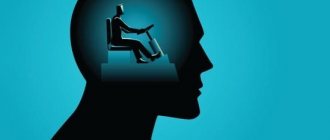What are moral standards?
Moral norms are a set of rules of behavior that are established within a particular society depending on people’s ideas about good and evil, justice and injustice. The preservation of moral standards is ensured through public approval and the internal conviction of each member of society.
All moral norms are formed from the real principles, ideals, and concepts of good and evil that people have. Thus, they all go through some kind of “social sieve” through which all norms of behavior are sifted and truly correct ones remain.
Thanks to the presence of moral norms, human behavior is regulated in various sectors and spheres of public life. First of all, we can highlight everyday life, work, family and personal relationships, intergroup and international. However, any type of interaction is determined by a specific set of moral standards. It is worth noting that moral standards differ markedly from the specific requirements of each industry in their socially all-encompassing nature, since they are mandatory for all people. They fix special requirements and constitute the basis and norm of behavior of society , determine the culture of interpersonal relations.
Any moral norm must be justified from the point of view of the value base of society, as well as its ideals, since moral norms act as a subordinate instrument of these ideals.
Control over compliance with moral standards is formed under the influence of public opinion and authorities, which cultivates in the minds of each person a position in matters of personal ideas about worthy and unworthy, moral and immoral.
Examples of moral standards
Over the entire history of humankind, a huge number of different moral norms have been formed, most of them are enshrined in all modern religions and teachings. Consider the list of the most important moral norms:
- Prudence. A person must be able to be guided by his own reason, and not by sudden gusts of emotion.
- Abstinence. This basis affects not only the sphere of personal relationships, but also the culture of food, entertainment, as well as the whole range of pleasures. Since ancient times, people have come to the conclusion that material wealth is a hindrance to spiritual values. Lent is one of the manifestations of this particular moral norm.
- Justice. This principle can be characterized by the proverb “Treat others the way you would like to be treated.” It is necessary to show respect towards other people.
- Politeness. Also grows out of the need to respect other people. Politeness is the basis of diplomacy.
- Hard work. At any stage of the development of humanity, in any society, work has always been encouraged.
- Humility. Humility means the ability to pause and stop in time. A person must be able to stop his impulses in a timely manner.
How do moral standards work?
The content of a person’s behavior is determined by his moral principles, since they contain some basic algorithms of behavior in a specific situation. The set of these principles is determined by the characteristics of a particular society. They are aimed at regulating various sectors of human life, as well as his actions. At the same time, all moral norms are constantly supported by public authority, discipline and opinion, and this is also reinforced by the conviction of every person in society about the need to adhere to proper behavior in specific conditions.
It is worth noting one more feature of moral norms. They are not simply a consequence of the existing social order, but act as an ideological justification for a person’s specific ideas about proper or inappropriate behavior , both in general and in a specific life situation. This is one of the key differences between moral norms and simple customs and habits, which include celebrating a birthday, wedding, or New Year.
Lesson summary “Basic principles and moral standards”
Lesson outline
on the topic of:
"Basic principles and standards of morality"
Lesson TYPE:
combined
LESSON OBJECTIVES:
1. To acquaint students with the essence of the concepts of “morality” and “morality”, to substantiate their significance in the life of society.
2. Show the reasons for changes in moral categories in the development of society, as the most important regulators of social life.
2. Develop an understanding of the value of one’s own life goals and objectives while respecting the goals and objectives of other people. To lead students to an understanding of the moral content of kindness, humanity, mercy, and to the motivation to perform kind and humane actions.
3. Develop a moral culture, forming an attitude towards moral guidelines.
Plan:
- Morality and its significance in human life and society.
- Functions of morality.
- Specificity of moral forms.
- Moral culture.
During the classes:
1. Organization of the beginning of the lesson.
Updating and focusing on studying the topic.
1. What are social norms, what types of social norms do you know?
2. What is ethics and what does it study?
3. Presentation of new material according to plan.
- Morality concept
Morality translated from Latin means pertaining to disposition, disposition of the soul. Morality is a combination of norms, rules and principles, the implementation of which is a consequence of either a person’s inner conviction or the influence of the force of public opinion on him. Morality is studied by a special philosophical science - ethics.
Morality arose long before the split of society into classes and before the emergence of political and legal consciousness. Morality is historically the first form of social consciousness. Moral consciousness owes its origin and role to the fact that in the conditions of social life, in any system of economic relations, there are 2 levels of interests:
— interests of various social communities (gender, class, nation, etc.);
- the interests of individuals included in these communities.
Morality is based on the authority of public opinion and the moral beliefs of the individual. In reality, these 2 levels are contradictory. Moral (moral) consciousness includes 2 main types of standards: moral norms and moral principles. Moral standards
- these are the rules of behavior of people in specific life situations.
They are ideas about humanism, goodness, duty, conscience, shame, honesty, etc. At each stage of historical development and in different countries, these ideas changed. Moral principles
are of a wider range than norms. They are usually formed as mottos, under the sign of which it is necessary to behave not only in a specific life situation, but also in an entire system of social relations. This kind of moral principles include such provisions as “respect your neighbor”, “honor your father”, “do not steal”, etc.
Morality operates in society as a combination of three structural elements: moral activity, moral relations and moral consciousness.
Before revealing the main functions of morality, let us consider a number of features of moral actions in society. The fact is that moral consciousness expresses a certain stereotype, pattern, algorithm of human behavior, recognized by society as optimal at a given historical moment. The existence of morality can be interpreted as society's recognition of the simple fact that the life and interests of the individual are guaranteed only if the strong unity of society as a whole is ensured. Thus, morality can be considered a manifestation of the collective will of people, which, through a system of requirements, assessments, and rules, tries to reconcile the interests of individuals with each other and with the interests of society as a whole.
2. Functions of morality
What is the social role of morality, that is, what are its main functions?
Here we can name 3 main functions of morality: regulatory, evaluative and educational.
Regulatory function
one of the main ones. Morality acts, first of all, as a way of regulating the behavior of people in society and self-regulation of individual behavior. Despite the fact that there are various methods of regulation in society: legal, technical, etc., the moral method of regulation continues to remain unique. There is no need to create any special bodies or institutions; moral regulation is carried out mainly through individuals’ assimilation of the relevant norms and principles of behavior in society.
Educational function
forms a personality, concentrating the moral experience of humanity, making it the property of each new generation of people. Through moral ideals and goals, morality ensures a harmonious combination of personal and social interests. She teaches you to do every task in such a way that it does not hurt other people.
And finally, the evaluative function allows morality to consider the world, phenomena and processes from the point of view of their humanistic potential. All this undoubtedly contributes to the unification of people and their development. A morally evaluative attitude towards reality is its understanding in terms of good and evil, justice and injustice, nobility and baseness, etc. The specific form of expression of moral assessment can be different: praise, agreement, blame, criticism, expressed in value judgments; showing approval or disapproval. A moral assessment of reality puts a person in an active, active relationship with it. By assessing the world, we are already changing something in it, namely, we are changing our attitude towards the world, our position.
3. Specificity of moral standards
Along with morality, relationships between people in society are also regulated by law. It, just like morality, includes standards and principles in its structures. unity and interconnection between morality and law
, manifested in the fact that:
— morality and law must correspond to each other and affirm the principles of goodness and justice in society;
- have a common object for regulation - social relations;
— have similar structures for carrying out the rule-making process;
- must not contradict each other.
Differences:
— legal acts express the state will; in moral norms and principles - public opinion;
— the rules of law contain the sum of instructions to citizens, sanctioned by the state; moral norms are formed in the process of direct behavior and communication of people in society;
— norms and principles of law are always specific and unambiguous in interpretation; understanding of moral truths may depend on different perceptions and interpretations of them.
Some moral norms may coincide in form with legal norms. For example, the norm “do not steal.” You can ask the question: “Why does a person refuse to steal?” If it is out of fear of being judged, then the motive is not moral; if it is out of the belief that theft is bad, then the act is based on moral grounds. In some situations, law and morality conflict and what a person considers his moral duty is a violation of the law (for example, someone steals medicine to save the life of a loved one).
4. Moral culture.
Moral
- this is the degree to which an individual has assimilated the moral values of society and practically followed them in everyday life, i.e. expression of the human in man. This is the level of real moral behavior of people. It is not enough to know moral standards; it is important to be guided by them in everyday life. Moral culture is a historically established system of traditional, established, fixed, normative relations between people.
Why do you think the moral culture of the individual differs from person to person? What factors can be identified? (low general culture, belonging to different social strata, different interests, etc.)
The elements of moral culture are: customs, rules of behavior, mores of a given culture.
The main moral concepts are:
— good and evil
(good is a positive, creative, harmonious quality of personality, evil is an aggressive, destructive, selfish state of an individual);
— duty
- the need to obey a more significant will than one’s own when fulfilling moral obligations;
— conscience
— correlation of human actions with generally accepted moral norms;
— humanism
- recognition of a person as the highest value.
The principle of humanism receives its most vivid expression in the so-called. The “golden rule of morality”, which involves treating others as oneself. In other words, the “golden rule” can be formulated as follows: “love your neighbor as yourself.” Morality is the basis of love, marriage and family. In turn, the family grows out of love as a moral and ethical principle. Mutual love gives the family the necessary moral charge, which subsequently harmonizes and protects family relationships. In addition to love, the pillar of a family is a sense of duty. If you lose it, then both love and family will be lost. Hence, the meaning of family life is to create and maintain an atmosphere that would contribute to the preservation of the family. The content of family life should be a dialogue aimed at understanding and respecting the interests of all family members. A friendly and tolerant attitude of spouses towards each other, parents towards children and children towards parents is an indispensable condition for the stability and integrity of the family.
Thus, morality begins where one person cares about another. Morality is creative: it builds the world, connects people. One must live without violating moral norms.
Consolidation of learned material:
Questions:
- What is morality?
- What functions does morality serve?
- What is moral choice and moral responsibility?
- What is the main difference between moral norms and customs and legal norms?
- What role does morality play in human life and society?
Homework:
notes in a notebook.
Creative task.
Read an excerpt from the work of M.E. Saltykov-Shchedrin “Conscience is gone.” Give a description and analysis of the moral category “conscience”.
Literature
- Vazhenin A.G. Social studies for professions and specialties in technical, natural science, and humanities: textbook: Recommended. "FIRO". - 8th ed., 2012, 432 p.
- Vazhenin A.G. Workshop on social studies: textbook. allowance for the environment. prof. textbook establishments.- 9th ed. - M.: Academy. 2013. - 208 p.
- Kasyanov V.V. Social studies: textbook. manual for colleges: approved by the Ministry of Defense of the Russian Federation / V.V. Kasyanov.- Rostov n/d.: Phoenix, 2012.- 414 p.- (Secondary vocational education).
- Social science in diagrams and tables / A.V. Makhotkin, N.V. Makhotkina. – M.: Eksmo, 2013. – 368 p.
- Social science in tables and diagrams / E.V. Domashek, O.V. Valchinskaya, A.V. Chagina. – ed. 5th. – Rostov n/d: Phoenix, 2013. – 190 p.
- Sorokina E.N. Lesson developments in social studies. Profile level: 11th grade. – M., VAKO, 2009. – 272 p.
Consequences of violating moral standards
First of all, it should be noted the voluntary nature of compliance with moral standards. However, violation of such principles leads to the imposition of certain sanctions, manifested in a negative assessment and condemnation of the behavior of a particular person. This nature of sanctions demonstrates moral condemnation and a ban on repeating such behavior in the future. Moreover, such moral sanctions can be addressed both to a specific person and to certain social groups. Moral sanctions act as another pillar that supports and reinforces the moral requirements of social norms.
It is worth noting that some moral norms, or rather their violation, may imply much more stringent sanctions, which are determined by the norms of formal requirements existing in society. For example, if a serviceman lied to his commander, then such behavior will lead to serious consequences, which will be determined by the severity of the consequences resulting from the deception.
Moral standards can be expressed in positive and negative forms. An example of a positive one is such laws as “be honest”, “respect your elders”, “help your neighbor”. Negative manifestations imply the prohibitive nature of norms, for example, “thou shalt not steal.”
Customs, traditions and business practices
Customs are historically established rules of human behavior as a result of repeated actions and entrenched in certain norms.
Varieties of customs include rituals and ceremonies - the performance of certain symbolic actions.
Traditions are close to customs; they are also historically established rules that are passed on from one generation to another and support family, national, and state foundations.
Business customs are rules of human behavior that develop in connection with the communication of people in the production, educational, and scientific spheres.
These rules provide for a certain order in any area; they are local in nature.
For example, it is customary at school for students to stand up when the teacher appears in the classroom. Or the organization holds planning meetings at a specific time.
You may be interested in the “Loan agreement with a bank” mental map, which lists the most common violations of banks
Or find out HERE how the termination of an employment contract is challenged in court
How are moral standards formed?
Here, first of all, you should realize that such categories as “good” and “evil”, “bad” and “good” are very conditional and relative. Each society may have its own value judgments on this matter. Since morality is also formed on the basis of these conditional categories, it also has a relatively conditional nature, which will be inherent in a specific social group. Also, the formation of moral standards is largely influenced by centuries-old traditions and customs , which can vary significantly depending on the society.
Currently, scientists are showing great interest in the processes of formation of morality in various ethnic groups. Research of this nature is aimed at studying social evolution and is based on the fact that behavioral norms are formed in such a way as to ensure the survival of a particular ethnic group , as well as to guarantee the continuation of the race. In this case, each person will be engaged in observing the norms of universal morality, since he will feel responsible to society.
Functions of moral standards
Moral standards perform several important functions in society:
- Worldview. Based on the morality of society, value orientations and categories are formed: norms, assessments and prohibitions. All individuals in society are engaged in fulfilling these guidelines.
- Cognitive. Each person is able to learn better about the cultural characteristics of his own society.
- Regulatory . Morality acts as a means of regulating people's daily lives. At the same time, it imposes some sanctions and also supports rules of behavior.
- Estimated. The humanistic approach becomes the basis for considering all surrounding phenomena and processes. This approach allows us to distinguish between such conditional categories as “good” and “evil.”
- Educational. Ensures the transfer of specific values from generation to generation.
- Motivational. The behavior of each person is determined by a wide number of factors, one of which is motivation, which pushes a person to action or inaction.
- Controlling. The individual must exercise independent control over himself, based on the condemnation of other members of society.
- Coordination. Describes the principles of interaction between people in various circumstances.
- Integrating. It lies in the unity of society, as well as its integrity in relation to the inner world of a particular person.
Purpose of morality
Morality acts as a regulator of a person’s actions, which subsequently determine his principles, personal views and beliefs. People do not need legal documents to adopt moral principles; such a decision is made voluntarily and independently.
The evaluative function of morality consists in the qualitative perception of one’s own and others’ actions, determining the meaning of actions. A person uses the acquired humanistic reserve to weigh on the scales the moral values of his steps and the deeds of other individuals. A more precise definition is given if a high level of compliance with moral standards is achieved.
The educational significance is that constant adherence to moral principles leads to the formation of social ideals in a person. An optimal combination of public and personal interests is developing. The individual achieves his own goals in a way that does not harm the surrounding space and people.
Other observers exercise unspoken control over a person's behavior, condemn him for bad actions and express positive emotions when he acts benevolently. Society monitors the living conditions of people. Morality sometimes depends on circumstances, so the environment must be worthy of a person. Morality plays an integrating role for the individual; awareness of the correctness of one’s own actions leads to internal harmonization.
How do moral norms differ from legal norms?
It is worth noting that law and morality in modern society are built on similar principles, since they guard universal human values and ideals. However, it is always worth remembering that law and morality act as different normative regulators. Each of these categories has its own characteristics and area of influence. Moreover, these categories have certain points of contact. However, there are certain differences. Let's look at them:
- Moral standards are, by their nature, rather vague and uncertain. Legal norms do not allow for different interpretations and are always definite and clear;
- The rules of law regulate the most important social relations, which are key from the point of view of human life support. Moral standards regulate all personal and social principles of behavior;
- Form of fastening. Legal norms are enshrined in laws, moral norms are deposited in the consciousness of society.
- The sanctions of legal norms are ensured by state coercion, and moral norms are protected by the possibility of public condemnation.
What forms a healthy personality?
Moral and ethical norms and other values constitute the image of not only ancient, but also modern man, who has successfully developed in the sense of standard piety. A child, and even adults, should strive for this portrait. So we can see the pursuit of this goal, based on the analysis of the individual’s actions.
In Christianity, the image of the Savior – Jesus Christ – is used as a standard. It was he who began to instill justice in human souls and hearts, as well as moral standards of behavior in society. He is God.
Ethics and other rules play the role of personal and life guidelines for different people. A healthy person sets his own goals. Thus, positive morality is manifested, which helps to control immoral behavior, as well as the thoughts and feelings of a person.
As you know, morality performs its functions in society in the form of 3 interconnected elements. Each of them represents one of the embodiments of morality. Let's introduce them:
- moral activity;
- moral consciousness;
- moral relations.











